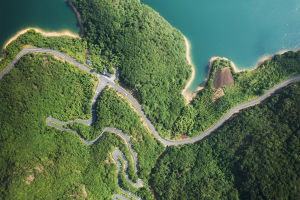Sea-crossing bridges are impressive engineering feats that span large bodies of water, including bays, straits, estuaries, and deep seas. These bridges often have long spans, ranging from a few kilometers to tens of kilometers long.
Due to the challenging natural conditions of the oceanic environment, the construction of sea-crossing bridges requires advanced technology and expertise.
Crossing the sea can connect regions, promote tourism, improve logistics efficiency, and reduce transportation costs, contributing to local economic development. However, sea-crossing bridges also pose challenges, such as environmental pollution, disruption of local ecosystems, high construction costs, and technical difficulties.
To address these challenges, planning and research are crucial in the design, structure, materials, construction technology, transportation, and installation of sea-crossing bridges to ensure their safety, stability, and durability.
During the construction phase, measures such as reducing noise and vibration, protecting marine ecosystems, and minimizing energy consumption are essential to mitigate the impact on the environment.
The marine environment poses a significant threat to the integrity and stability of bridge structures due to various corrosion factors and extreme weather conditions such as typhoons and thunderstorms. Therefore, bridge corrosion protection technology and management are critical to the construction of sea-crossing bridges.
In addition to construction, sea-crossing bridges require comprehensive management and maintenance during their use. The marine environment can cause corrosion and damage to the bridge structure and materials, making regular inspection and maintenance necessary.
The safety of the bridge must also be a top priority, requiring a sound safety management system and various emergency plans and drills to ensure reliability.
Aside from their practical benefits, sea-crossing bridges have significant social and cultural value.
The construction of these bridges requires the cooperation and integration of resources and forces from multiple parties, including governments, enterprises, scientific research institutions, engineers, and skilled workers. This fosters connection and cooperation among parties, improving technology and management levels in society.
Moreover, sea-crossing bridges have become local landmarks and tourist attractions, attracting many tourists for sightseeing and tourism.
The construction of sea-crossing bridges is a complex and crucial project that provides essential support for modern cities and economic development. With continuous technological innovation, we can expect more sea-crossing bridges to appear worldwide.
The construction of sea-crossing bridges involves challenges and opportunities. The planning, design, construction, management, and maintenance of these bridges require advanced technology and expertise to ensure safety, stability, and durability.
Additionally, the construction of sea-crossing bridges fosters connection and cooperation among parties, improving technology and management levels in society while providing significant economic and cultural benefits.


